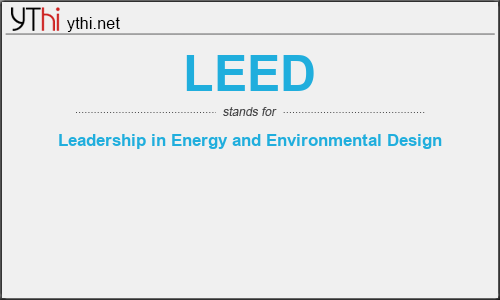What does LEED mean? What is the full form of LEED?
The full form of LEED is Leadership in Energy and Environmental Design.
The LEED plaque on a building is a mark of quality and achievement in green building.
Leaders across the globe have made LEED the most widely used green building rating system in the world with 1.85 million square feet of construction space certifying every day. LEED certification provides independent verification of a building or neighborhood’s green features, allowing for the design, construction, operations and maintenance of resource-efficient, high-performing, healthy, cost-effective buildings. LEED is the triple bottom line in action, benefiting people, planet and profit.
LEED certification means healthier, more productive places, reduced stress on the environment by encouraging energy and resource-efficient buildings, and savings from increased building value, higher lease rates and decreased utility costs. LEED-certified buildings will directly contribute $29.8 billion to U.S. GDP by 2018.
LEED (Leadership in Energy and Environmental Design) is the most widely used green building rating system in the world. Available for virtually all building types, LEED provides a framework for healthy, highly efficient, and cost-saving green buildings. LEED certification is a globally recognized symbol of sustainability achievement and leadership.
LEED is for all building types and all building phases including new construction, interior fit outs, operations and maintenance and core and shell. Unsure of which rating system to use? Check out our interactive Discover LEED tool to get started; then, use the rating system selection guidance to make a final decision.
Millions of people are living, working and learning in LEED-certified buildings around the world. Learn more about the value of LEED certification.
LEED
means
Leadership in Energy and Environmental Design![]()
Translate Leadership in Energy and Environmental Design to other language.


Leave a Reply
You must be logged in to post a comment.